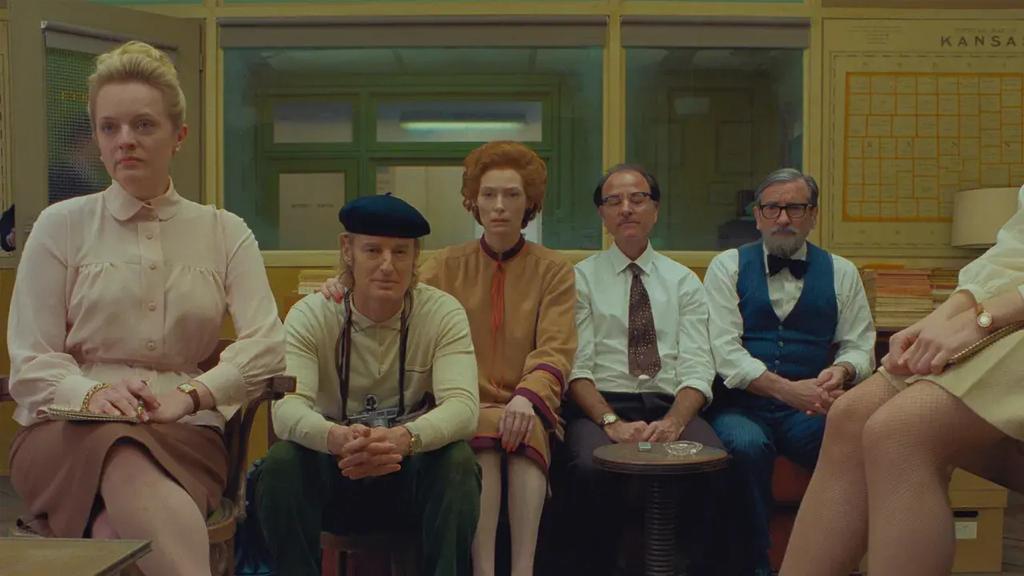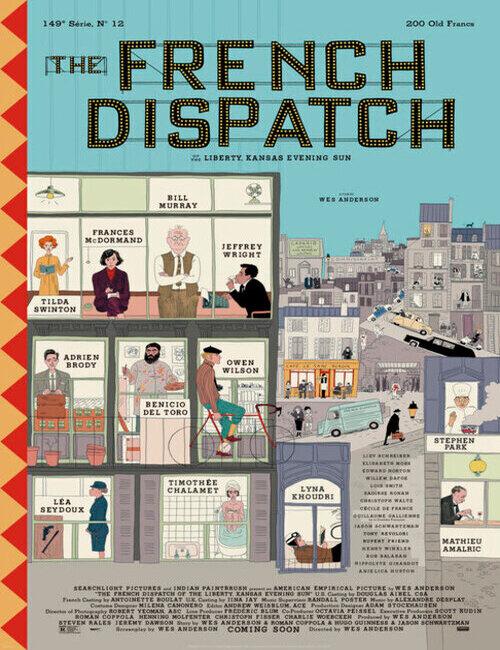By Muhammad Irfan
The French Dispatch of the Liberty, Kansas Evening Sun or simply known as The French Dispatch, is an anthology of film written, directed and produced by the renowned Wes Anderson, who previously produced award-winning film, The Grand Budapest Hotel.
The French Dispatch boasts a large A-list ensemble cast with an aesthetically pleasing production design as well as a captivating score. These attributes are best known for the strengths of Andersons films and it is unquestionably present in his most recent work.
Despite all the amazing values The French Dispatch possessed, critics have suggested that the film is ˜style over substance. I beg to differ.
Though The French Dispatch is undoubtedly heavy in terms of its visuals, I personally believe that the plot of the film was successfully executed in attribution to the films storyline. As a student journalist, I could appreciate Andersons storytelling as he brings the audience through the journey of a magazine issue.
The French Dispatch is modelled after the real life magazine, The New Yorker which inspired Anderson in creating the film. Taking place in a fictional city called ˜Ennui-sur-Blasé’ which loosely translates as ˜Boredom-upon-Apathetic, The French Dispatch follows the lives of the people in the city.
The story began as Arthur Howitzer Jr. (Bill Murray), the editor of The French Dispatch, died of a heart attack. In his will, he stated that the publication of the magazine will cease its operation immediately to only produce a final farewell issue which includes a brief travel-guide, three feature articles and an obituary. This sets the precedent of what the film will be.
The brief travel guide follows the adventures of Herbsaint Sazerac (Owen Wilson) reporting from his bicycle across the city of Ennui. Sazerac brought the audience to the bootblack district, the bricklayers quarter, the butchers arcade and through the pickpocket cul-de-sac while he contrasted the places with its past and describes its rowdy features to which he includes eccentric traits such as ˜rats, vermin, gigolos and streetwalkers in his writing.
The first feature article titled ˜The Concrete Masterpiece follows J. K. L. Berensen (Tilda Swinton) giving a lecture on Moses Rosenthaler (Benecio Del Toro), an artist serving a life sentence for homicide who falls in love with his muse and prison guard, Simone (Lea Seydoux), while Julian Cadazio (Adrien Brody), is an art dealer who came across Moses artworks while serving time for tax evasion. He then represents Moses’ artworks to the outside world after his release.
The second feature article titled ˜Revisions to a Manifesto follows Zeffirelli (Timothée Chalamet), a student revolutionary and Lucinda Krementz (Frances McDormand), the French Dispatch writer whose journalistic neutrality was questioned as she became entangled in the students revolutionary movement when helping Zeffirelli with his manifesto, leading to a conflict with another student revolutionary, Juliette (Lyna Khoudri).
The third feature article titled ˜The Private Dining Room of the Police Commissioner centres around the writer Roebuck Wright (Jeffrey Wright), in his bid to report on Lieutenant Nescaffier (Steve Park), an esteemed chef working at the Ennui police department kitchen. He shares the story through his ˜typographic memory as he quotes his article word for word to the host of a TV show played by Liev Schreiber.
Roebuck Wright was supposed to have dinner with The Commissaire of the Ennui police force (Mathieu Amalric) but was interrupted when The Commissaires son, Gigi (Winsen Ait Hellal), is kidnaped. This quickly turned from a food segment to a crime segment.
It all ends with the obituary as the staff of The French Dispatch including illustrators, grammarians and writers working together to complete the final issue.

All of the stories in the film were accomplished with great detail and amazing artistic choices. From the switch of black-and-white and colour to set the mood in each story, to the use of animation in the police chase during the kidnapping of Gigi in the last feature article, The French Dispatch always pulls a surprise to keep the audience entertained.
The way Anderson tells each story is also unique as they differ from each feature. The first feature was told from a lecture, the second feature from the perspective of a journalist and the third feature from a TV show interview. The diverse storytelling in each feature made it engaging for the viewers to follow the story.
The impeccable score by Alexandre Desplat and the flawless set design by Adam Stockhausen also managed to add to the whimsy and tie in the atmosphere of the film. These additional artistic designs are just the cherry on top of a film that already has a great premise.
The French Dispatch is so striking and vivid that it will cause a sensory overload as viewers try to grasp and piece together information gained from the film. I believe The French Dispatch was meant to be re-watched in order to have a better understanding and appreciation for the film. Hence, it is unquestionable that Anderson has succeeded in the department of ˜style again. But how about in the ˜substance department?
For the ˜substance in the film, credit needs to be given to Wes Anderson, Roman Coppola, Hugo Guinness and Jason Schwartzman for their stories. Each of the stories in the film was enthralling as they cover different topics including art, politics, food and crime.
It was fascinating to see several subjects being addressed in the film as it kept the stories fresh and distinctive from one another. Although the success of each article varies, overall it was a treat.

Anderson should also be praised for the background research done prior to making the film as he delves deep into the past to draw inspiration from previous articles and journalists of The New Yorker which can be seen throughout the film. For example, the character Arthur Howitzer Jr. was based on the co-founder of The New Yorker, Harold Ross.
The brief travel-guide by Sazerac at the beginning of the film is undeniably influenced by The New Yorker ˜Talk of the Town segment. Likewise, the first feature, ˜The Concrete Masterpiece, draws its inspiration from the 1951 feature titled ˜The Days of Duveen, a feature on Lord Duveen, an art dealer whose character Julien Cadazio is shaped upon.
Meanwhile, ˜Revisions to a Manifesto is clearly inspired by the article ˜The Events in May: A Paris Notebook by Mavis Gallant which tells the story of May 1968 student protests. On the other hand, the character Roebuck Wright in ˜The Private Dining Room of the Police Commissioner was a blend of various The New Yorker journalists, namely James Baldwin, A. J. Liebling and Tennessee Williams.
Despite Andersons fondness towards The New Yorker, he did not interpret each inspiration directly into the stories, instead Anderson managed to instil his own twist to keep it interesting and make it feel contemporary. For example, the addition of themes such as love and exile in the first and third features both add flair to the story that was already compelling respectively.
Anderson was also not afraid to use the second feature as a commentary on the importance of journalistic objectivity in reporting sensitive issues such as student protests while still keeping true to his style. The play around student protesting to enter the girls dormitories and having a chess match to settle the dispute is ridiculously ingenious and funny at the same time.
Although some would argue that there is no clear-cut plot development in The French Dispatch, which led to the view that The French Dispatch is ˜style over substance, I believe that is intentionally done and is what made the film a standout in comparison with other films.
Anderson purposely sacrifice plot development in order to portray the stories in a way it is distinguishable while also allowing him to display his craft at its finest. Ultimately, that is what the film is about, to showcase the diversity of journalists rather than focusing on one story alone.
In my humble opinion, The French Dispatch deserves praise for its originality and idiosyncrasy which made it a film like no other. Through the vivid set design, excellent acting performance and distinctive storyline, the film is truly in a class of its own. ***
(The views expressed in the article are those of the author/contributor and do not necessarily represent the views of IIUMToday.)
